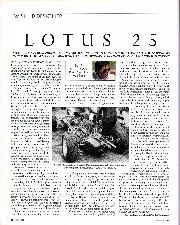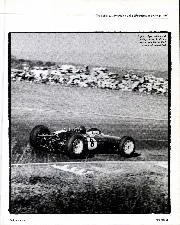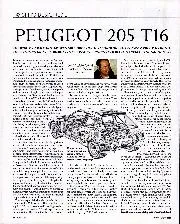
David Lapworth: ‘Wish I’d designed… Peugeot 205 T16’
The car that stands out for me is the Peugeot T16. It was the first of its kind, and very well executed. It was a huge undertaking, and a big…

Lotus 79 and Andretti proved formidable – one of many iconic Hethel driver/car combinations
Grand Prix Photo
The Lotus 79, the first real ground effect car was a very, very good package, the first realisation that aerodynamics were becoming crucial and that you could make ground effects work. Everybody then began rushing around cutting and shutting existing designs. But of course you can’t add ground effect if it’s not in the existing concept.
When the 79 arrived, everybody was panicked into producing their own skirted ground effect car, not having realised what the 78 was pointing to the year before. Lotus had a year of investigation before anyone twigged, and it’s the same today. A lot of people have something which next year will make them much better. By the time someone picks it up, they’re behind. If we’re not now looking at the 2002 car, we’re behind, because the 2001 car is already under way and, good or bad, we’re committed to it.
Peter Wright was very involved with the 79; hats off to him and Chapman, that they were prepared to do something so radical. I’ve always appreciated designers like Gordon Murray, for instance, who do something different. You need real confidence for that. Of course it’s a bit limiting now because of the regulations. The envelope is set for you; everybody ends up with almost identical designs and only detail differences. It gets pretty boring just altering the radius on the leading edge of a wing.

Andretti and Peterson dominating at Zandvoort
Grand Prix Photo
I was at McLaren when the 79 was revealed; we were at Ricard testing, and Teddy Mayer and I had a chat that night and decided that unless we did something fast we’d get left behind. We revised an M26 to give us a reasonable step forward, but really it needed to have been done as a concept package; there were too many compromises with the tanks at the side etc. But with the manpower we had, there was no question of a new car in mid-season. It was an interesting time; who was going to pick the ball up quickest?
That’s when Brabham came up with the fan car; if you didn’t have a ground-effect concept, what else could you do? I was actually at Brabham for a day and a half during its development. I had been there before, but when I returned the way the company had changed didn’t suit me so I went back to McLaren. At the time, they had built this device with surface-cooling on the side of the monococque, which Niki Lauda drove, but it didn’t work. First they ran with radiators in the nose, and then someone suggested they fitted a radiator with a fan at the back of the monocoque, and the fan got bigger and the radiator got smaller and the skirts arrived…
So Gordon’s defence that it was an auxiliary cooling device wasn’t a complete fabrication. The feeling in the pitlane was it was a brilliant solution. At McLaren we soon had one specced-out with twin fans; it would probably never have left the pit-road, but by the time people had laughed at the Brabham, saw it racing and winning and began to think how to better it, it was banned. Although a lot of effort had gone in to it, I believe that was the right thing to do, because everybody would have had a bigger and better one in a short time. And because Bernie ran Brabham, it was possible to ban it; if it had been Lotus or McLaren it would have been more difficult, but Bernie was prepared to accept it. He’d shown what could happen, and was happy enough to have that notch on his bedpost.
Now if you could attach the main body of the 79 to the back end of the fan car for low-speed downforce you’d really have something. At speed you would switch the fan off for maximum engine performance, and allow the fixed aerodynamics to work; you’d have a rocketship on your hands. If only the regulations could be opened up, with a simple set of goalposts at the end of the pitlane if you can drive through that hole, you can do what you want with engines, suspension, aerodynamics…
With the aerodynamics knowledge we have now, there would be a substantial jump in speeds if you could build a ground effects car. You’d immediately find yourself 2-3sec on the average track, and if you went on to, say, active suspension, lap times would be maybe 5sec quicker. Mind you, I think next year with the arrival of tyre competition, you’ll see 2sec coming just from the tyres, even with four grooves.
There wasn’t any great attempt to conceal how the 79 worked; it was still a sport then, and they were proud of their idea. It was a good package quite simple, did its job, wasn’t complex. Williams went that same simple route afterwards, and won by not trying to be too flash; their ground-effect cars were simple and worked well. Many others put too much emphasis on the ground effect and the cars were too hard to drive, too sensitive to the road. I remember seeing the Ligier passing the pits at Monza, and it had so much ground effect it began porpoising; sucking itself down too far, breaking the suction and bobbing up again. To control it they added so much damping that when this happened, it would take the front wheels off the ground; really a lack of understanding at the time of just how much downforce you could actually create. Even Lotus over-exploited the aerodynamics for the 80. That was never going to work, a total wing-section car with the skirts coming back through the wheels too complex for the technology of the time.
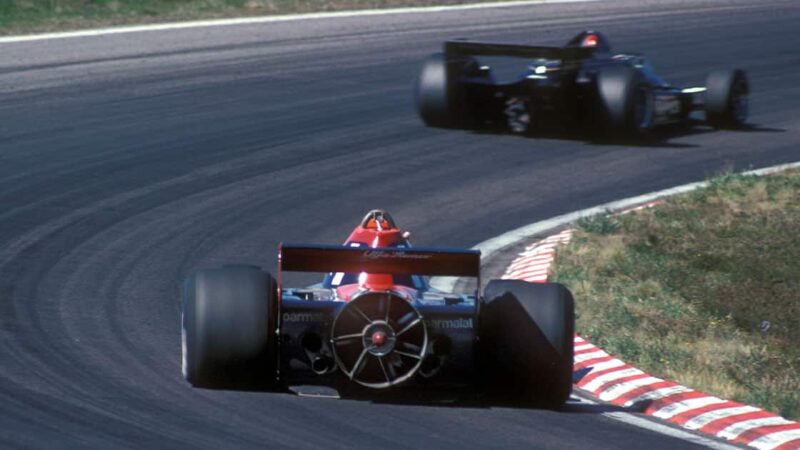
Brabham BT46B ‘fan car’ was only machine capable of producing similar downforce to the 79 in the ’78 season
Grand Prix Photo
We were mainly using road car tunnels like MIRA; rolling roads weren’t seen as necessary until the late ’70s. I don’t know how Lotus managed at that time, but since the 79 probably doubled downforce in one jump, any minor improvements weren’t so significant. Now we’re looking for a one per cent gain…
With today’s facilities, you could make the Lotus 80 work; but in 20 years time we’ll be saying the same thing about today. In the ’70s, we thought we were King Kong; we had it sussed. But racing stays the same. I went to Nürburgring in ’73 with Brabham, looking after a BT42. I drove the truck and looked after the car on my own for the weekend; we finished fifth, loaded the car up and headed for Austria. I went back there last weekend with 60 people and crates of electronics, and it doesn’t change anything; you end up with two cars shunted and no result…
Gary Anderson was talking to Gordon Cruickshank
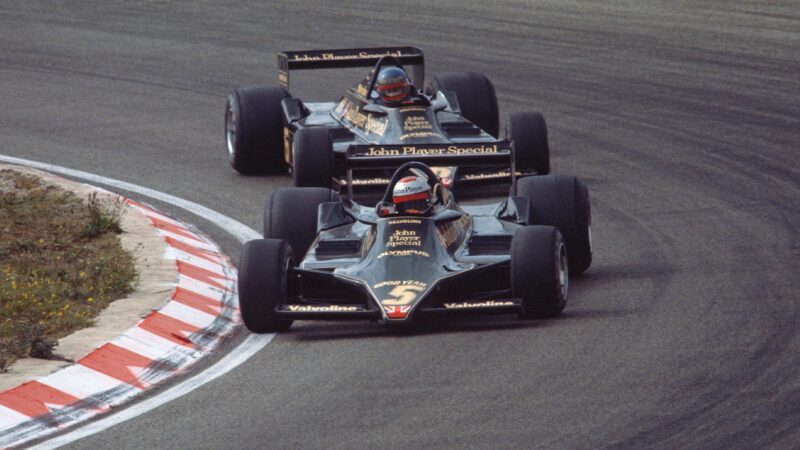
Mario Andretti leads Ronnie Peterson in the 1978 Dutch GP
Grand Prix Photo

|
2025 Motor Sport calendar: 75 years of F1The two Lotus 79s of Mario Andretti and Ronnie Peterson on their way to a 1-2 finish at Zandvoort feature in Motor Sport’s 2025 calendar, celebrating 75 years of the Formula 1 World Championship |
The car that stands out for me is the Peugeot T16. It was the first of its kind, and very well executed. It was a huge undertaking, and a big…
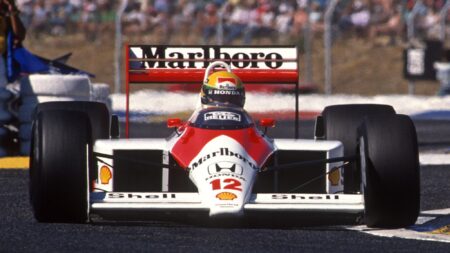
In 1987, I had just started in Formula 1 as aerodynamicist at Leyton House. I worked a little bit on developing the 871, and then worked throughout the winter on…
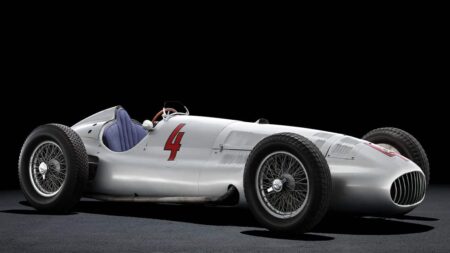
The Mercedes W154 is one of the machines in the running to be named Race Car of the Century; will it get your vote? Click below or scroll to the…
It’s a slight problem to choose a car I didn’t do because I’ve been associated with so many over the years, much more than most I suppose [Lola, Brabham, Gurney-Eagle,…
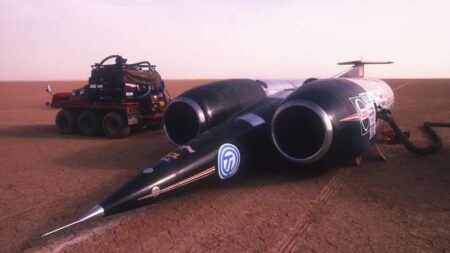
There have been a lot of great racing cars, but I don’t really get very excited about things like the Lotus 72. Every time I look at an old car,…
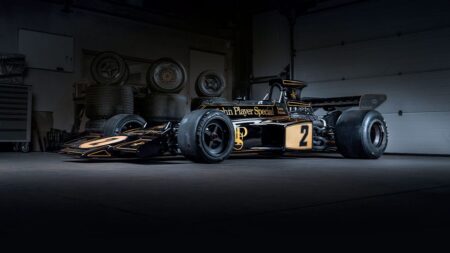
For me it’s the Lotus 72 – an emotional choice as much as a design one. It came out in 1970 when I was 11 and getting interested in motorsport,…
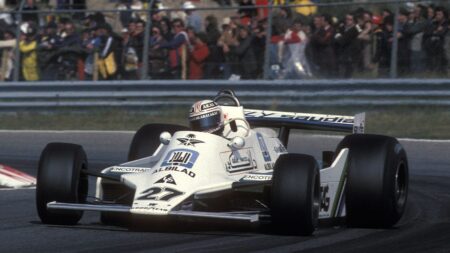
I would go for the Williams FW07. Williams won their first GP with it, in 1979, and, refined for the following year, it won the championship with Alan Jones. It…
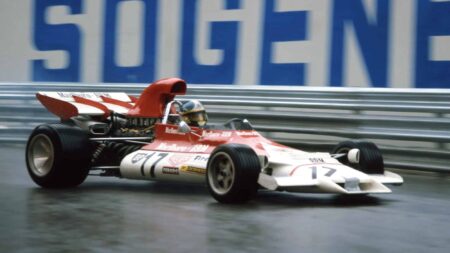
I was impressed by the BRM P160, designed by Tony Southgate. I took the car over and developed it when I rejoined BRM in 1972 (I first went there in…

The Lotus 79, the first real ground effect car was a very, very good package, the first realisation that aerodynamics were becoming crucial and that you could make ground effects…
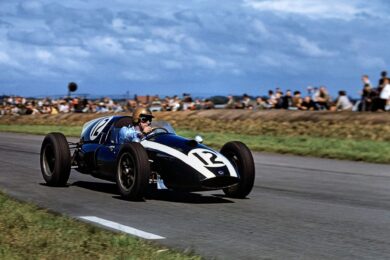
When I think back to GP design milestones, it’s pretty obvious, really: the first rear-engined F1 Cooper. Not so much from a technical point of view even though it was…
